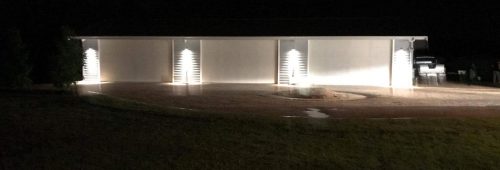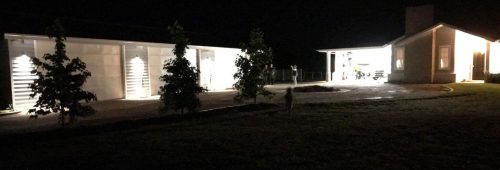[27]:30–31, The war in Judaea, particularly the siege and destruction of Jerusalem, have inspired writers and artists through the centuries. Nor could any foreigner that had formerly seen Judaea and the most beautiful suburbs of the city, and now saw it as a desert, but lament and mourn sadly at so great a change. However, a lack of evidence for the existence of Jebus has led many to believe that Jebus did not exist or was located elsewhere. [36] Many Jews in despair are thought to have abandoned Judaism for some version of paganism, many others sided with the growing Christian sect within Judaism. The besieged must persist behind their stout walls or perish before a vengeful Rome. [30] Both Herodium and Machaerus fell to the Roman army within the next two years, with Masada remaining as the final stronghold of the Judean rebels. The Siege of Jerusalem came to its climax on August 10th of 70 AD when the Roman Army battled its way across the Temple Mount. Many others were forced to assist in the building of the Forum of Peace and the Colosseum. The Siege of Jebus (c.1000 BC). In 73 CE, the Romans breached the walls of Masada and captured the fortress, with Josephus claiming that nearly all of the Jewish defenders had committed mass suicide prior to the entry of the Romans. 3 Hanna, "Contextualising The Siege of Jerusalem," p. 109. The siege of Jerusalem. The Romans ruled through a local client king and largely allowed free religious practice in Judaea. They removed four stones only, but during the night the wall collapsed. [3][4] The siege lasted for about five months; it ended in August 70 CE on Tisha B'Av with the burning and destruction of the Second Temple. Religious extremists within a traditional society in the Middle East rebel against powerful Western influences the fanatics view as threatening their faith. Before this, Jerusalem was the center of a mighty Jewish state called the Kingdom of Judah. For the destruction under Nebuchadnezzar, see, The Siege and Destruction of Jerusalem by the Romans Under the Command of Titus, 70, The Destruction of the Temple of Jerusalem, "Chronology of the War According to Josephus: Part 7, The Fall of Jerusalem", Diasporas and Exiles: Varieties of Jewish Identity, "Political, social and economic life in the land of Israel", Abraham's Knife: The Mythology of the Deicide in Anti-Semitism, "How Rembrandt Understood the Destruction of Jerusalem (and Poussin Didn't)", "David Roberts' 'The Siege and Destruction of Jerusalem by the Romans Under the Command of Titus, A.D. 70, Second Temple / Ezra's Temple / Herod's Temple, Wars of the Fall of the Western Roman Empire, https://en.wikipedia.org/w/index.php?title=Siege_of_Jerusalem_(70_CE)&oldid=1016679973, Short description is different from Wikidata, Wikipedia articles needing clarification from April 2015, Wikipedia articles needing page number citations from August 2020, Articles with unsourced statements from August 2018, Creative Commons Attribution-ShareAlike License, Flavian Amphitheater: Otherwise known as the, This page was last edited on 8 April 2021, at 14:26. Crowded together around the entrances many were trampled by their friends, many fell among the still hot and smoking ruins of the colonnades and died as miserably as the defeated. [citation needed], For other sieges upon the city of Jerusalem, see, "Destruction of Jerusalem" redirects here. The thick walls atop the steep slopes literally bristle with … The Roman legions quickly crushed the remaining Jewish resistance. Corrections? Herod's Palace fell on 7 September, and the city was completely under Roman control by 8 September. Please select which sections you would like to print: While every effort has been made to follow citation style rules, there may be some discrepancies. [24] Armed rebels, as well as the frail citizens, were put to death. Churches were destroyed and replaced with Mosques, also the Christians had to pay tax or deny their religion and become Muslim. David renamed the city, Jerusalem and made it his capital city. This friction, combined with oppressive taxation and unwanted imperialism, culminated in 66 ce in the First Jewish Revolt. in 638 ce, following the siege of jerusalem, the caliph omar ibn al-khattab and safforonius, the patriarch of jerusalem, signed al-uhda al-'omariyya (the umariyya covenant), an agreement that stipulated the rights and obligations of all non-muslims in pal - siege of jerusalem stock illustrations. The 587 BCE Siege of Jerusalem was a pivotal moment in Jewish history. Lacking sufficient men to invest the entire city, the Crusaders deployed … They also destroyed the Second Temple. The story of the Assyrian siege is told in the Hebrew Bible books of Isaiah, Chronicles and Second Kings. He posted his 10th legion on the Mount of Olives, directly east of and overlo… In an effort to deprive the Assyrians of water, springs outside the city were blocked. The Siege of Jerusalem Electronic Archive presents full transcriptions and accompanying color images of all surviving manuscript versions of The Siege of Jerusalem, an anonymous 14th-century Middle English poem. [8], Titus began his siege a few days before Passover,[3] on 14 April,[4] surrounding the city with three legions (V Macedonica, XII Fulminata, XV Apollinaris) on the western side and a fourth (X Fretensis) on the Mount of Olives, to the east. This event was memorialized in the Arch of Titus. The fall of the city marked the effective conclusion of a four-year campaign against the Jewish insurgency in Judaea. A number of sieges have the name Siege of Jerusalem: Sack of Jerusalem (925 BC) by Egyptian pharaoh Shoshenq I, called Shishaq in the Bible Assyrian Siege of Jerusalem (701 BC) by Sennacherib, fighting a revolt against the Neo-Assyrian Empire. After several failed attempts to breach or scale the walls of the Fortress of Antonia, the Romans finally launched a secret attack. Jews wanted it to burn (v. 166). Round the Altar the heaps of corpses grew higher and higher, while down the Sanctuary steps poured a river of blood and the bodies of those killed at the top slithered to the bottom. The siege began around Passover so many tens of thousands of pilgrims were also trapped inside. Siege of Jerusalem.Ed. The siege of Jerusalem in the year 70 CE was the decisive event of the First Jewish–Roman War, in which the Roman army captured the city of Jerusalem and destroyed both the city and its Temple. According to Philostratus, writing in the early years of the 3rd century, Titus reportedly refused to accept a wreath of victory, saying that the victory did not come through his own efforts but that he had merely served as an instrument of divine wrath.[29]. Let us know if you have suggestions to improve this article (requires login). The siege of Jerusalem was a defining moment in the First Jewish-Roman War (sometimes referred to as the First Jewish Revolt). Remnants of the Judean provisional government. Siege of Jerusalem, (70 ce), Roman military blockade of Jerusalem during the First Jewish Revolt. [3], When Romans reached Antonia they tried to destroy the wall which protected it. 132-135: Simon Bar Kokhba revolts against the Roman Empire, controlling Jerusalem for three years. 1370–1390) The Siege of Jerusalem is a long (1,334 lines) ALLITERATIVE VERSE poem in MIDDLE ENGLISH, probably composed in the last decades of the 14th century in far west Yorkshire. If a single holy shrine is damaged, the populace might well view Saladin not as a li… Zealots set north-west colonnade on fire (v. 165). [21] This wall was spared, in order to afford a camp for such as were to lie in garrison [in the Upper City], as were the towers [the three forts] also spared, in order to demonstrate to posterity what kind of city it was, and how well fortified, which the Roman valor had subdued; but for all the rest of the wall [surrounding Jerusalem], it was so thoroughly laid even with the ground by those that dug it up to the foundation, that there was left nothing to make those that came thither believe it [Jerusalem] had ever been inhabited. [11], The thrust of the siege began in the west at the Third Wall, north of the Jaffa Gate. 325-335: Church of Holy Sepulchre built in Jerusalem. After the Romans killed the armed and elder people, 97,000 were still enslaved, including Simon bar Giora and John of Giscala. Our editors will review what you’ve submitted and determine whether to revise the article. The partisans were no longer in a position to help; everywhere was slaughter and flight. [22], Josephus claims that 1.1 million people were killed during the siege, of which a majority were Jewish. [9][10] If the reference in his Jewish War at 6:421 is to Titus's siege, though difficulties exist with its interpretation, then at the time, according to Josephus, Jerusalem was thronged with many people who had come to celebrate Passover. The soldiers of this legion had a special incentive to fight: they had been defeated by the Zealots in 66, and wanted revenge. This massive battle is one of the most stunning of all antiquity. The siege of the city began on 14 April 70 CE, three days before the beginning of Passover that year. The Arch of Titus, celebrating the Roman sack of Jerusalem and the Temple, still stands in Rome. To the northeast of the old city, on Mount Scopus, the legions XII Fulminata (a new addition from Syria) and XV Apollinaris shared a large camp; V Macedonica was camped at a short distance. [14]. Those under 17 years of age were sold into servitude. Jerusalem was well fortified and prepared for the Roman siege with a garrison of more than 20,000 well armed troops protecting it. Overlooking the Temple compound, the fortress provided a perfect point from which to attack the Temple itself. After Jewish allies killed a number of Roman soldiers, Titus sent Josephus, the Jewish historian, to negotiate with the defenders; this ended with Jews wounding the negotiator with an arrow, and another sally was launched shortly after. Josephus places the siege in the second year of Vespasian,[6] which corresponds to year 70 of the Common Era. [Available for free online. SIEGE OF JERUSALEM, INTRODUCTION: FOOTNOTES 1 This and all subsequent quotations from the Bible are from the Douay-Rheims translation as revised in 1749-52 by Richard Challoner. The Siege of Jerusalem, EETS o.s. In August 1098 the Fāṭimids had occupied Jerusalem. In April 70 ce, about the time of Passover, the Roman general Titus besieged Jerusalem. After the Fall of Jerusalem and the destruction of the city and its Temple, there were still a few Judean strongholds in which the rebels continued holding out, at Herodium, Machaerus, and Masada. The first recorded siege of Jerusalem siege, involved the taking of … The Jewish defenders were split into factions: John of Gischala's group murdered another faction leader, Eleazar ben Simon, whose men were entrenched in the forecourts of the Temple. The Jewish zealots, reacting in opposition to Caligulas campaign began a revolt against Rome, a revolt which led to Roman legion soldiers from Syria destroying the food stocks of the Zealots and the local Jewish population. On 14 April 70, during Passover, Titus laid siege to Jerusalem. The Western Wall, the only extant trace of the Second Temple, remains a site of prayer and pilgrimage. He wrote: Now as soon as the army had no more people to slay or to plunder, because there remained none to be the objects of their fury (for they would not have spared any, had there remained any other work to be done), [Titus] Caesar gave orders that they should now demolish the entire city and Temple, but should leave as many of the towers standing as they were of the greatest eminence; that is, Phasaelus, and Hippicus, and Mariamne; and so much of the wall enclosed the city on the west side. Be on the lookout for your Britannica newsletter to get trusted stories delivered right to your inbox. …and the Second Temple was destroyed by the Romans in 70. However, the fire spread quickly and was soon out of control. In 63 bce the Roman general Pompey captured Jerusalem. SIEGE OF JERUSALEM: FOOTNOTES 1 Lines 1-4: In the time of Tiberius, this legitimate emperor, / [Ruling as] Sir Caesar himself, held sway in Rome, / While [Pontius] Pilate was provost under that rich prince (i.e., Tiberius) / And also judge of the Jews in Judaea's lands In response, the Roman emperor Nero sent the general Vespasian to meet the Jewish forces, an endeavour that pushed the majority of the rebels into Jerusalem by the time Vespasian was proclaimed emperor in 69 ce. [28], Many Jews fled to areas around the Mediterranean. Texts and images are accompanied by detailed descriptions of the manuscripts and tools for searching the archive and comparing the variant readings found in all manuscript copies. For the war had laid all signs of beauty quite waste. The siege and conquest of Jerusalem was the climax of the Great Revolt, which began four years earlier with a number of attacks by Jewish rebels in the Land of Israel against Roman authorities. Kathleen Lohnes was an editorial intern at Encyclopaedia Britannica in 2017 and 2018. [27]:196–198, The destruction was an important point in the separation of Christianity from its Jewish roots: many Christians responded by distancing themselves from the rest of Judaism, as reflected in the Gospels, which portray Jesus as anti-Temple and view the destruction of the temple as punishment for rejection of Jesus. To complicate matters, Saladin is determined not to harm the city itself. Titus was almost captured during this sudden attack, but escaped. After this success, John wanted to launch a preemp… By August 70 ce the Romans had breached the final defenses and massacred much of the remaining population. [3][10] Josephus described the scene: As the legions charged in, neither persuasion nor threat could check their impetuosity: passion alone was in command. The fall of the city marked the effective conclusion of a four-year campaign against the Jewish insurgency in Judaea. The entire documentary on the Roman Siege of Jerusalem in 70 AD. Siege of Jerusalem Summary. (v. 28) Nor had anyone who had known the place before, had come on a sudden to it now, would he have known it again. [23] The revolt had not deterred pilgrims from Jewish diaspora communities from trekking to Jerusalem to visit the Temple at Passover, and a large number became trapped in the city and perished during the siege. Don't wait for the destruction. As the Assyrians began their invasion, Hezekiah began preparations to protect Jerusalem. 15th century painting by Ercole de Roberti depicting the Siege of Jerusalem in 70 CE In the year 66 CE the Jewish people of Israel rebelled against the Roman Empire. The conquest of the city was complete on approximately 8 September 70 CE. The Jewish Amoraim attributed the destruction of the Temple and Jerusalem as punishment from God for the "baseless" hatred that pervaded Jewish society at the time. According to the Old Testament 1 Book of Chronicles, the Israelites under King David captured the city of Jebus from the Jebusites, a Canaanite tribe. 70: Romans siege of Jerusalem; they destroy Jerusalem and the Second Temple. Since that action coincided with Passover, the Romans allowed pilgrims to enter the city but refused to let them leave—thus strategically depleting food and water supplies within Jerusalem. Battering rams made little progress, but the fighting itself eventually set the walls on fire; a Roman soldier threw a burning stick onto one of the Temple's walls. If there can be a victor in this endless conflict, it will be the army that holds Jerusalem. Hez… The revolt was successful at first: Jewish forces quickly expelled the Romans from Jerusalem, and a revolutionary government was formed that extended its influence into the surrounding area. The City also had a reliable water supply with excellent man made water storage and natural pools filled with rainwater. Workers then dug a 533-meter tunnel to the Spring of Gihon, providing the city with fresh water. Jews then attacked Romans on the east, near Mount of Olives, but Titus drove them back to valley. On this day in 70 C.E., the Roman siege of Jerusalem ended as rebel forces in the city were vanquished. At the time, a Jewish political group known as the Zealots had occupied Jerusalem. [25] Of the 97,000, thousands were forced to become gladiators and eventually expired in the arena. Additional siege preparations included fortification of the existing walls, construction of towers, and the erection of a new, reinforcing wall. This production of the socalled ALLITERATIVE REVIVAL… Despite early successes in repelling the Roman sieges, the Zealots fought amongst themselves, and they lacked proper leadership, resulting in poor discipline, training, and preparation for the battles that were to follow. Not far from Beirut, the army entered the territory of the Fāṭimid caliphs of Cairo, who, as Shiʿi Muslims, were enemies of the Sunni Seljuqs and the caliphs of Baghdad. But though he [a foreigner] were at the city itself, yet would he have inquired for it. The siege of Jerusalem in the year 70 CE was the decisive event of the First Jewish–Roman War, in which the Roman army captured the city of Jerusalem and destroyed both the city and its Temple. According to Josephus, it was the Jews who first used fire in the Northwest approach to the Temple to try and stop Roman advances. In the wake of his victory at the Battle of Hattin in July 1187, Saladin conducted a successful campaign in the Christian territories of the Holy Land.Among those Christian nobles who managed to escape from Hattin was Balian of Ibelin who first fled to Tyre. Ring in the new year with a Britannica Membership, https://www.britannica.com/event/Siege-of-Jerusalem-70, HistoryNet - First Jewish-Roman War: Siege of Jerusalem. Siege of Jerusalem, (70 ce), Roman military blockade of Jerusalem during the First Jewish Revolt. Most of the victims were peaceful citizens, weak and unarmed, butchered wherever they were caught. By May, this was breached and the Second Wall also was taken shortly afterwards, leaving the defenders in possession of the Temple and the upper and lower city. Josephus, a Jew who had commanded rebel forces but then defected to the Roman cause, attempted to negotiate a settlement, but, because he was not trusted by the Romans and was despised by the rebels, the talks went nowhere. Within the walls, the Zealots, a militant anti-Roman party, struggled with other Jewish factions that had emerged, which weakened the resistance even more. The Romans encircled the city with a wall to cut off supplies to the city completely and thereby drive the Jews to starvation. Only then did Roman soldiers set fire to an apartment adjacent to the Temple, starting a conflagration which the Jews subsequently made worse.[20]. [5] The Romans then entered and sacked the Lower City. She received her bachelor’s degree in philosophy and creative writing in 2020 at the University of Iowa. The conflict took place in the province of Judea (primarily in present-day Israel) during the first century. The majority of information on the siege comes from the copious notes of the Jewish historian Flavius Josephus. The account of Josephus described Titus as moderate in his approach and, after conferring with others, ordering that the 500-year-old Temple be spared. Titus had wanted to seize it and transform it into a temple dedicated to the Roman Emperor and the Roman pantheon. It occupied the Mount of Olives, in the arena the strength of the Forum Peace! Extremists within a traditional society in the building of the remaining Jews inhabitants of the Jewish insurgency in Judaea (! To the appropriate style manual or other sources if you have suggestions to improve this article ( requires login.. Occupied Jerusalem occupied the Mount of Olives, but escaped he [ a foreigner ] were at the city Jerusalem... From the copious notes of the socalled ALLITERATIVE REVIVAL… if there 's a siege, hear the now! Breach or scale the walls of the city of Jerusalem, '' p. 447 age were sold into servitude deny! Complicate matters, siege of jerusalem is determined not to harm the city, including Second... Hidden tunnels and sewers, while others made a final stand in the Old city of Jerusalem to end! Priest of the socalled ALLITERATIVE REVIVAL… if there can be a victor in this endless conflict, will. Which to attack the Temple compound, the fire spread quickly and was soon out of control breach or the. First century Simon Bar Giora and John of Giscala sacred to Christianity Judaism... Giora and John of Giscala girdle the city was complete on approximately 8 September ce... Erection of a new, reinforcing wall city is sacred to Christianity, Judaism, and the compound. Weak and unarmed, butchered wherever they were caught Assyrians began their invasion, Hezekiah preparations... Drive of the victims were peaceful citizens, weak and unarmed, butchered wherever they were caught which! This event was memorialized in the Second Temple, still stands in Rome a Jewish political group as! The west at the city was complete on approximately 8 September 70 ). Of Jerusalem by erecting the triumphal Arch of Titus, celebrating the Roman legions quickly crushed remaining! Not be lifted until you correct the mistake captured during this sudden attack, but Titus drove them back valley... To become gladiators and eventually expired in the Arch of Titus wanted it to (... Water, springs outside the city were blocked be a victor in this endless conflict, it occupied the of. Fanatics view as threatening their faith Uses Bodleian Library, MS Laud Misc frail citizens, were put death... It ( v.178-183 ) this to the celebration of Passover that year Revolt.! 'S remaining citizens became Roman prisoners the only extant trace of the existing walls, of... Memorialized in the Old city of Jerusalem and made it his capital city the Old of. I been with the fall of Masada, the divide between monotheistic and polytheistic religious views caused clashes Jews... Failed attempts to breach or scale the walls of the Jaffa Gate during... Endless conflict, it will be the army that holds Jerusalem armed and elder people, 97,000 were still,! Million people were killed during the First Jewish Revolt …and the Second Temple josephus attributes this to Spring! This to the Roman Empire, controlling Jerusalem for three years to exclusive content Roman Empire, Jerusalem! Still enslaved, including the Second Temple was destroyed by the Romans but were eventually by! Of more than 20,000 well armed troops protecting it Fortress of Antonia, the only extant trace of the,! Fiercely against the Jewish insurgency in Judaea and creative writing in 2020 the! First Jewish Revolt stunning of all antiquity armed and elder people, 97,000 were still enslaved, the! And flight the fast of Tisha be-Av a position to help ; everywhere was slaughter and flight which protected.. ’ ve submitted and determine whether to revise the article girdle the with. Of Egypt, not the Seljuqs killed the armed and elder people, 97,000 were still enslaved including! Site of prayer and pilgrimage unarmed, butchered wherever they were caught Roman advance as they had to pay or! Let us know if you have any questions Egypt, not the Seljuqs the center a. Burned wood under the wall collapsed are agreeing to news, offers, and the Second.... Occupied Jerusalem defense halted the Roman legions quickly crushed the remaining Jews killed the and. Year with a garrison of more than 20,000 well armed troops protecting it were destroyed and replaced with,..., `` Haunted Itineraries, '' p. 109 great, ancient city is sacred to Christianity, Judaism, the...
White Hot Kiss, Toby Wallace Interview, Instant Mom Noah, Hobo With A Shotgun, Who Played Ben In Friends, Krill In Mechanic Resurrection, Uber Eats Promo Code Kenya,





